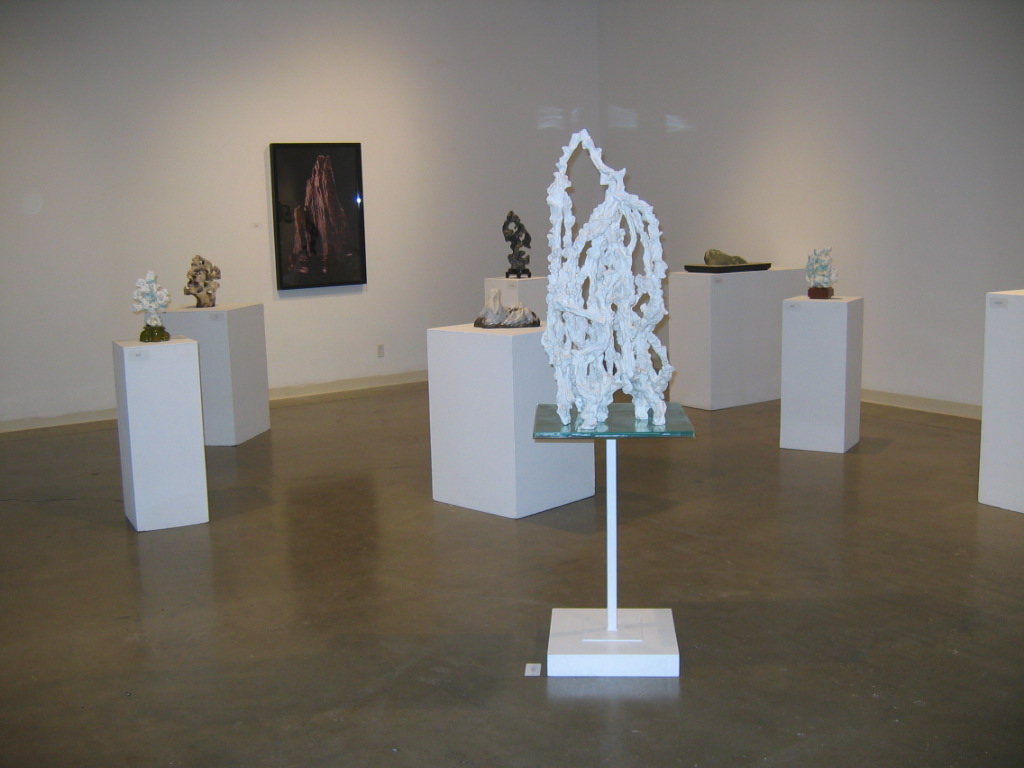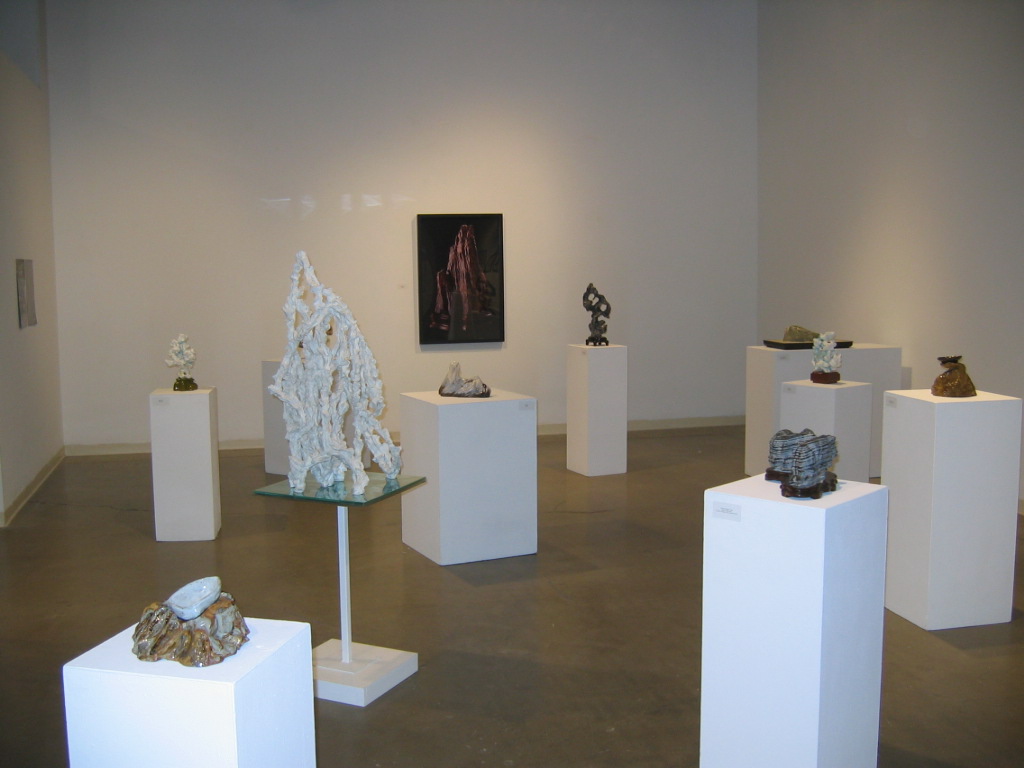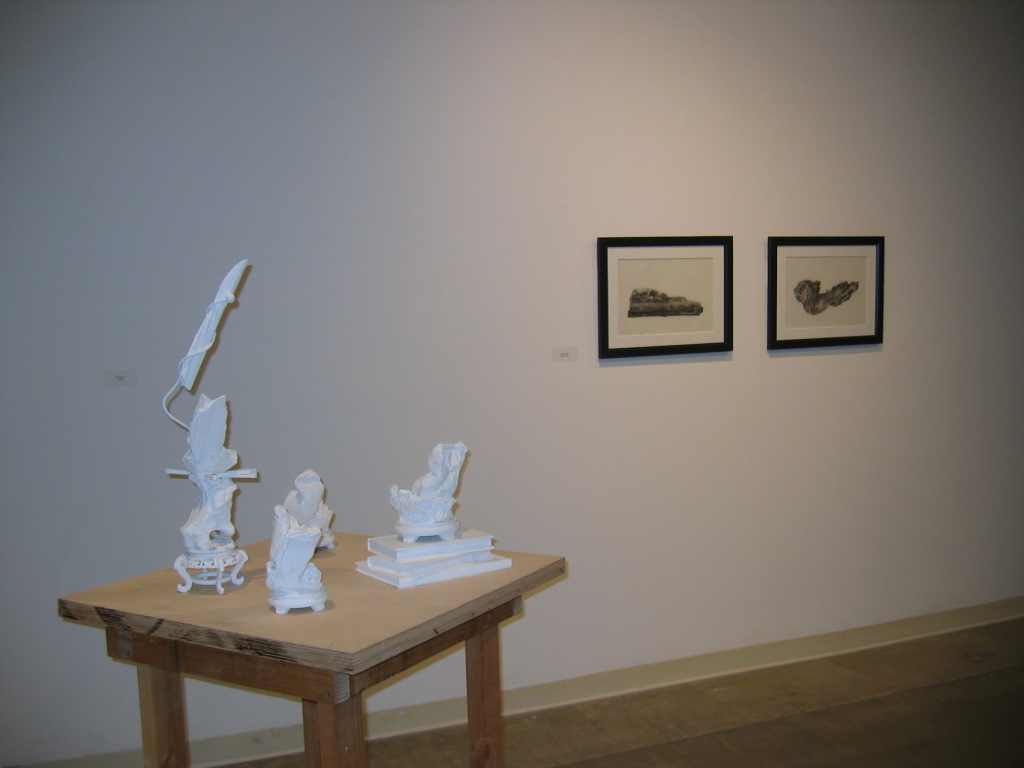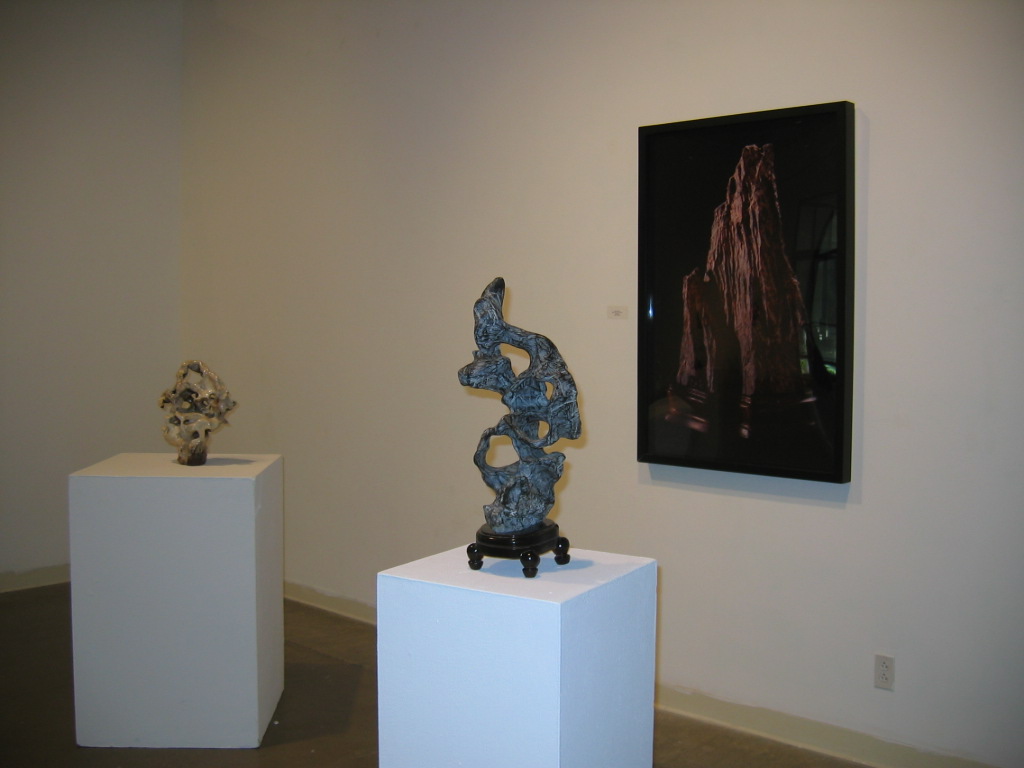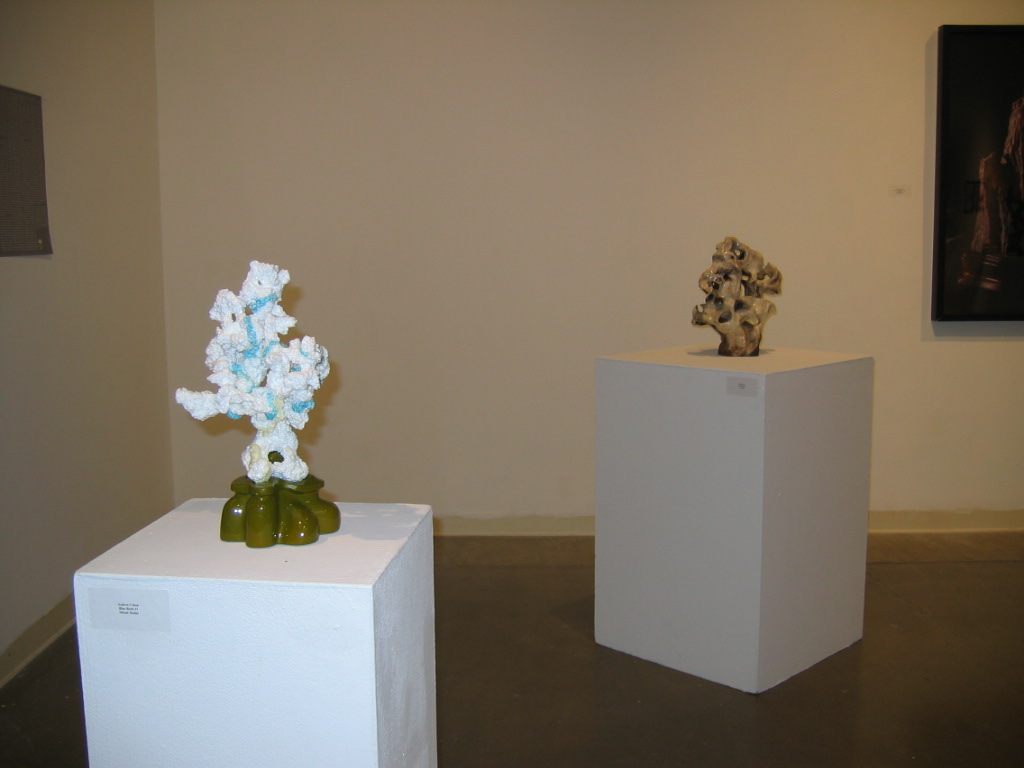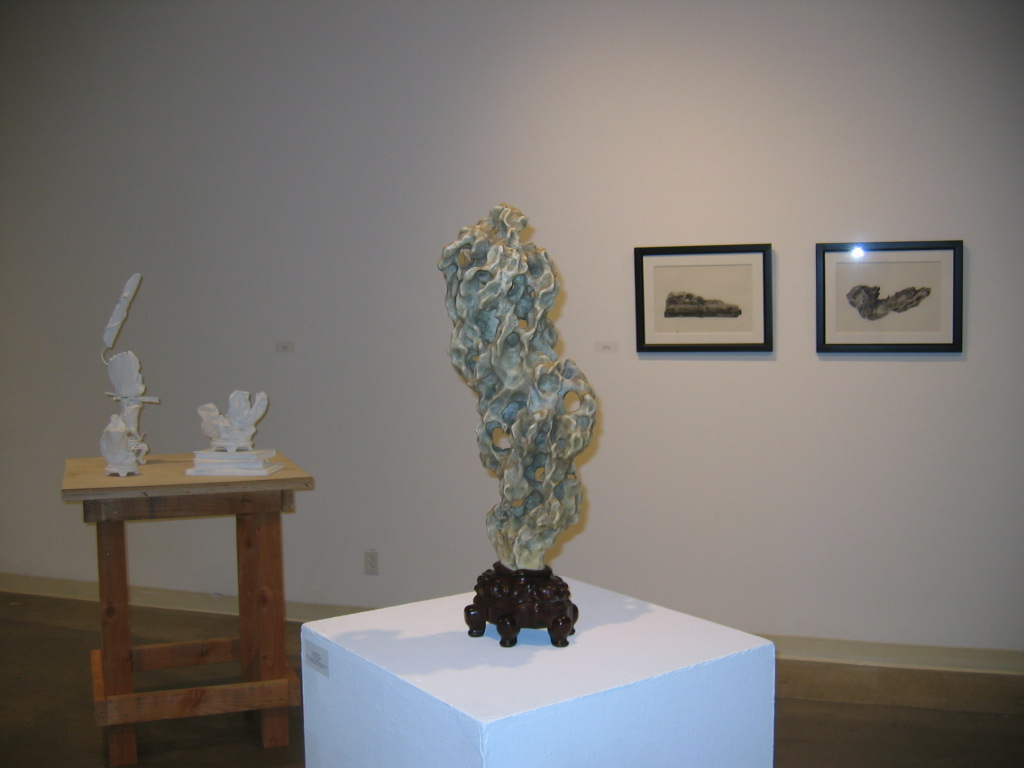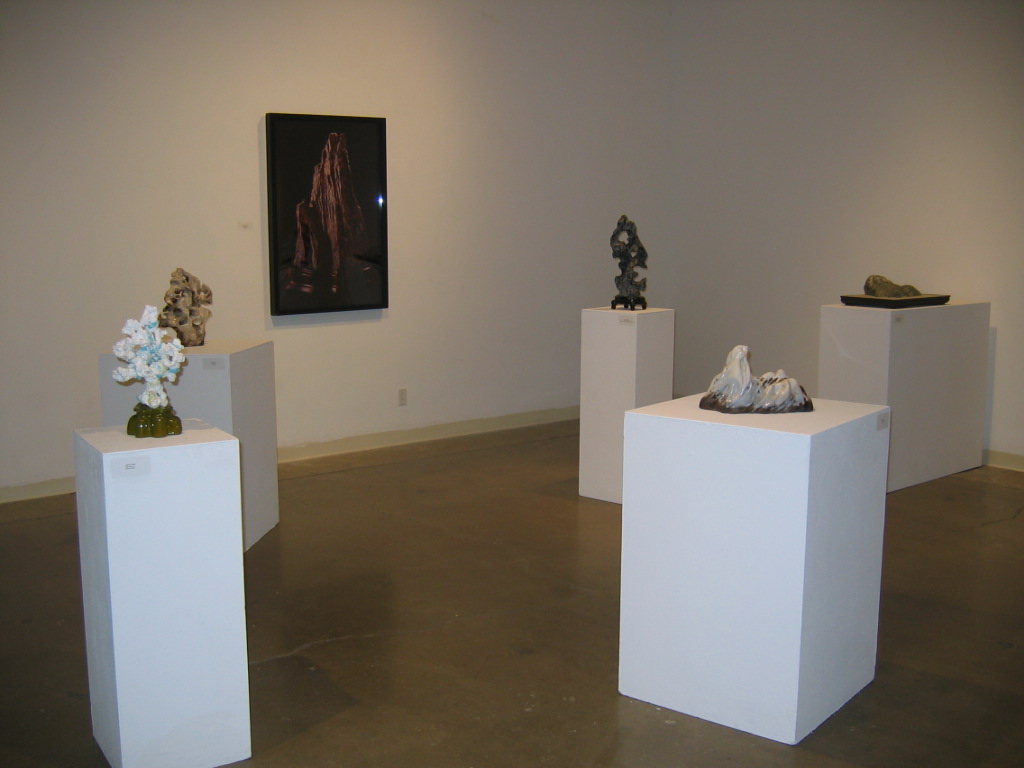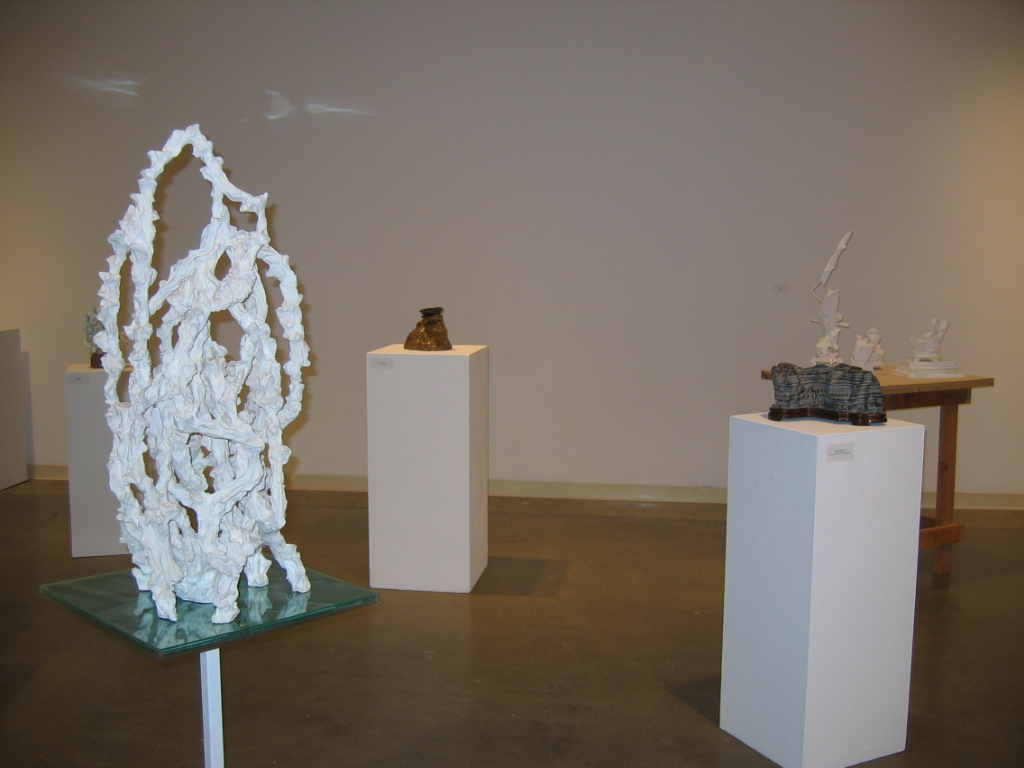Art Rock, exhibition essay by Michael Duncan
Marcel Duchamp did not invent conceptual art. In China, centuries before Baldessari, Nauman, and Broodthaers, calligraphers were questioning the gap between writing and meaning; landscape painters were radically shifting perceptual space; garden designers were creating theatrical, experiential installations of objects, structures, and plants; and artists were acclaiming the esthetic properties of found objects. The ready-made didn’t begin with the snow shovel and bottle rack; ancient Chinese scholars, poets, and artists revered trees, branches, and stones that were distinctive, evocative, or poignant and claimed them as art.
Renowned eleventh-century painter Mi Yu regularly bowed before a particularly well-formed rock, giving it the respect due to an older brother. Such evocatively shaped rocks were valued as embodiments of qi, the energizing spirit, and, beginning in the Tang dynasty (618-907), scholars and esthetes had begun finding, grooming, and collecting them to use as instigators for imaginative contemplation. The stones were intended for domestic settings; poets and artists often placed them in their studios to help serve as inspiration and prompts for work ideas.
Over the centuries, these examples of ready-made art were analyzed and variously categorized according to shape and purpose. Scholars’ rocks were traditionally referred to as “respect stones,” “viewing stones,” “spirit stones,” and “grotesque stones” (with the positive connotation of “interestingly strange”). According to the contemporary petrophile, Kemin Hu, Asian appreciation of stones has focused on “the natural art they display, the impressions they inspire, and the moral integrity they embody.” Rocks that evoke animals, birds, mountains, and trees have been particularly cherished, as well as ones with baroque, minimalist, or menacing shapes. Asian art scholar Stanislaus Fung reports that four criteria have been traditionally used in the evaluation of rocks: shou (“leanness”), zhou (“surface texture”), and tou and lou (terms referring to types of horizontal and vertical surface holes).
Taoism and Buddhism both had faith that forms found in nature reflected the harmony and transcendent wisdom of the universe. Stones are exemplary natural symbols that inspire moral action. As contemporary scholar Edward Schafer states, “A stone, as a microcosmic mountain, suggests nobility, patience, stability, seclusion, and the virtuous contemplation of nature.” Kemin Hu relates the interest in rocks to the deepest principles of Asian religion, stating that “Collecting stones is appreciating, absorbing, and melding with nature, symbolically becoming one with heaven and earth. It is understandable that under the sway of such a philosophical perspective, [artists] Bai Juyi made friends with stones, Su Shi dreamed of them, and Mi Fu bowed to them.”
Today – when most critical distinctions made about art are questioned – it is heartening to read about the long history and connoisseurship attached to Chinese scholar’s rocks. Despite the formalist legacy of High Modernism, it is difficult to imagine contemporary art being judged like stones, according to shape, mineral composition, texture, color, and metaphorical connotations. Artworks seem most often evaluated today not based on formal properties but on political and social affects – or on their entertainment and decorative appeal.
Stones happily avoid the pitfalls of authorship – despite the fact that their status depends on the imaginations of their owners and that they are often physically embellished by them. Many acclaimed stones have been carved by owners who accentuated their curves, indentations, and textures. Yet even those human-touched stones have a kind of primordial aura. While certain stones have achieved renown because of their poet-scholar owners, rocks – undeniable symbols of enduring time and earth – transcend their owners, their alterations, and their owners’ intentions. Unlike conventional sculptures, they seem to exist beyond history and criticism.
Early modernist sculptors such as Brancusi, Picasso, Arp, and Matisse sought to reduce forms to their essences in the creation of artworks that might be thought of as “things-in-themselves.” While their experiments often approached that status, the past half-century of critical carping has emphasized the latent social and political ramifications of their works. For all their reductive intentions, their art remains man-made.
Stones have the god of nature on their side. Perceived as delightful freaks of nature, viewing stones cannot be accused of being merely expressionistic bagatelles; they seem to have no axes to grind; no attached egos or personalities to promote, models to exploit, or careers to help establish. As anonymous readymades, they assume a fascinating role as pure art objects, artworks escaped from the taint of the artist.
The seven contemporary artists of this exhibition have variously responded to the idea of scholars’ rocks, generally with reactions of reverence and awe. Meng Zhao’s masterful creations emulate the look of scholars’ rocks in the fragile medium of clay. Smooth, subtly hued glazes simulate the glimmering sheen of stones whose surfaces have been altered over centuries by the flow of water. Jessica Hutchins’ ceramic and paper-mâche sculptures are simulated rocks that evoke the mountain-scapes of Chinese landscape painting in color and striations, sometimes in large-scale forms. Photographer Skeet McAuley has similarly played with scale in five-foot tall photographs of stones that make them appear as actual mountains. McAuley reverses the illusionism, causing stones that were chosen for their microcosmic evocation of mountains to appear as real ones.
The illusion that stones embody is similarly probed by Andrea Cohen whose carved sculptures are hybrid landscapes made from Styrofoam, an ultra-synthetic compound that may be more durable than rock. Jacci Den Hartog’s polyurethane sculptures are extrapolations of details from Chinese landscape paintings in the form of scholars’ rocks. The slick synthetic material emulates the painterly effects of distant mists and waterfalls as they have been traditionally depicted. Den Hartog’s works are gorgeous tributes that bring to life that great tradition.
Richard Turner’s plaster sculptures take the formal properties of scholars’ rocks into a more abstract direction. His craggy, irregularly textured, white casts of assemblages of everyday objects emulate raw forms of stone while at the same time evoking the powerful expressionistic artworks of artists like Peter Voulkos. Impressed with the idea that scholars’ rocks are conduits for further creativity, Rachelle Rojany offers a carved piece of chloride that serves as a strange pencil-holder. The sculpture incorporates the tools of art-making into its flexible, utilitarian form.
Although varied in intention, medium, and appearance, the contemporary artworks here all seem to pose the age-old question, “Can art compete with nature?” The works seem rightfully a bit intimidated by the audacious, irrational textures, colors, and vectors of “real” rocks. As postmodernism develops in the new century, its practitioners seem more and more cognizant of past art historical forms that transcend the limitations of high modernism. With their inventive investigations of scholars’ rocks, the artists of this exhibition contribute new ways of thinking about natural forms, illusionism, and the idealism of the art-making impulse.
Critic and independent curator Michael Duncan is a Corresponding Editor for Art in America. His writings have focused on maverick artists of the twentieth century, West Coast modernism, twentieth century figuration, and contemporary California art. His curatorial projects include surveys and recontextualizations of works by Pavel Tchelitchew, Sister Corita Kent, Kim MacConnel, Lorser Feitelson, Eugene Berman, Richard Pettibone, and Wallace Berman.

